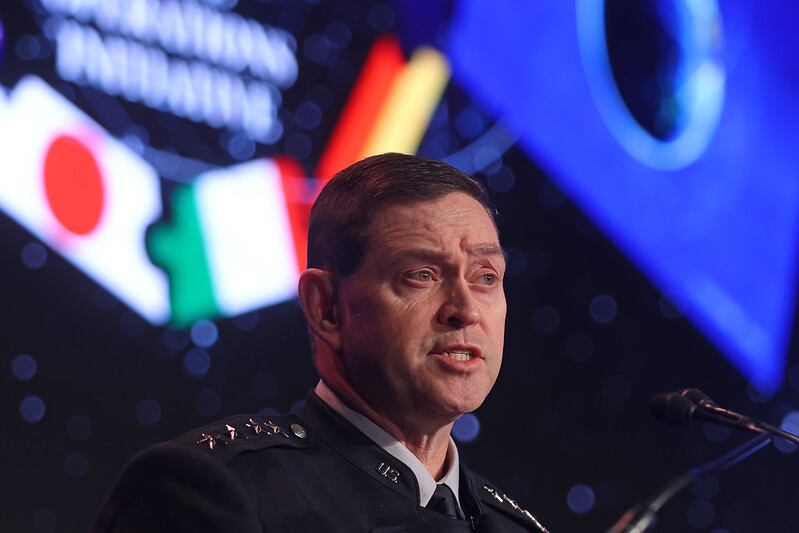U.S. Space Command’s top officer said today his team is leaning hard into experimentation as a means for fielding capabilities that address some of its highest priority missions, including missile threat tracking, command and control and domain awareness.
The command recently produced its first-ever strategies for experimentation and AI and machine learning, Gen. Stephen Whiting said Tuesday — a step toward addressing operational needs by trying out capabilities that are available today from both traditional defense companies and new entrants to the market. The experimentation strategy was completed in December 2024 and the AI strategy was just signed out in March.
Both strategies prioritize missions like missile defeat, enhanced battlespace awareness, cyber defense and space control — a term the Defense Department uses to encompass the offensive and defensive capabilities needed to ensure the U.S. and its allies can safely operate in space.
Speaking at the Space Symposium in Colorado Springs, Colorado, Whiting highlighted a slew of recent efforts — including one by Space Command’s Marine Corps component designed to fast-track commercial space domain awareness capabilities. The component found an off-the-shelf capability and, through rapid experimentation that was coupled with funding and testing, helped inform a plan to field a military-tailored solution by 2027.
That capability, Whiting said, will help Space Command better track missile threats from China.
Space Command is also using Palantir’s Maven Smart System to operationalize space combat concepts. It has integrated the AI platform — which integrates software with advanced digital capabilities to help operators distill sensor data and make faster decisions — into its Joint Operations Center, or JOC.
The JOC provides a joint operations floor for multiple services and agencies to integrate data and decision-making. The center is using Maven to streamline tactical information between Space Command and its subordinate operations centers, Whiting said.
Separately, Space Command has been testing a capability to fuse missile warning and missile defense data in a way that gives operators a single picture of the threat environment. Whiting said the command has since developed an initial data integration layer and plans to install it at the JOC. As it expands on the pilot, the plan is to iteratively feed new capabilities to the center.
Whiting also announced a new pilot program to demonstrate sustained space maneuver. In partnership with the Space Force’s innovation arm, SpaceWERX, Space Command plans to award 10 firms contracts worth $1.9 million each.
“This effort will continue to invest in the most promising technology from commercial industry to help us solve the sustained space maneuver challenges so we can bring this joint function to the space domain,” he said.
Courtney Albon is C4ISRNET’s space and emerging technology reporter. She has covered the U.S. military since 2012, with a focus on the Air Force and Space Force. She has reported on some of the Defense Department’s most significant acquisition, budget and policy challenges.







